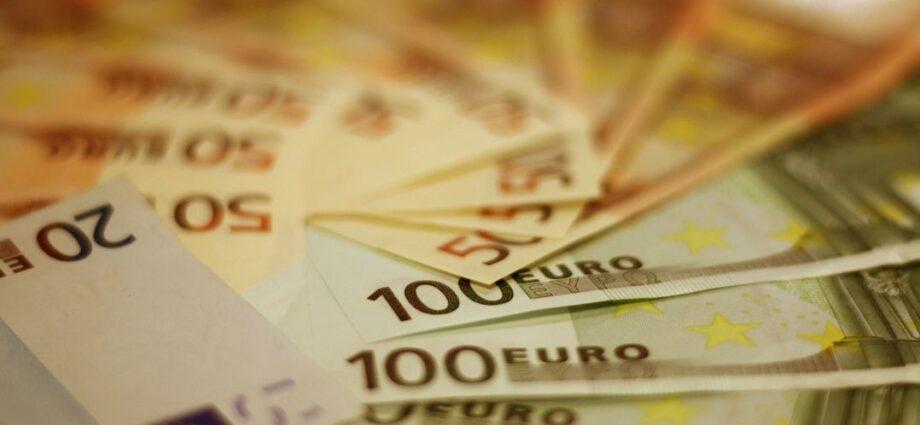Russia’s role in Ukraine’s crisis has psychologically affected the 19 European countries that use the euro as their currency. The euro has dropped to its lowest level against the US dollar in 20 years, signaling the end of the two currencies’ 1:1 exchange relationship. This is a mental barrier in the marketplace, familiar to those that courtier forex. The causes and probable effects of the euro’s depreciation are discussed below.
Simply expressed, what does the equalization of the euro and the dollar mean?
It means that the euro and the USD are worth the same amount. Despite its volatility, the euro slipped this week to a position just below $1. The euro’s exchange rate has fallen as Europe’s economic outlook has deteriorated. Following the end of worldwide lockdowns, analysts projected recovery in the economy; they are now forecasting a recession.
The primary causes are the increasing energy cost and record inflation levels. When it comes to supplying energy to companies and power plants, Europe depends significantly more on Russian oil and natural gas than the US. Oil prices have surged owing to fears that the crisis in Ukraine may decrease the Russian oil supply to worldwide markets. Officials in the European Union say that Russia is cutting back on natural gas deliveries to the EU because of sanctions and the sale of weapons to Ukraine.
In July, inflation in the Eurozone reached a record 8.9% due to increasing energy prices, which have increased the cost of living throughout the area. They have also said that they are worried that countries might have to limit the use of natural gas in industries like steel, glass making, and agriculture if Russia cuts off or stops gas supplies even more.
The mood was soured when Russia said the Nord Stream 1 pipeline to Germany would be shut down for three days next week for “routine maintenance” at a compressor facility, reducing flows to 20% of capacity. Prices for natural gas on Europe’s TTF benchmark have reached all-time highs because supplies are falling, people are worried about future cuts, and demand is still high.
How long has it been since one euro was equivalent to one dollar?
Since July 15, 2002, the euro has never been valued at less than $1. The European currency achieved an all-time high of $1.18 shortly after its debut on January 1, 1999, before commencing a continuous drop that saw it pass the $1 mark in February 2000 and reach a record low of 82.30 cents in October of that same year. Because of big trade imbalances and accounting scandals on Wall Street, the dollar lost value in 2002, and the euro went above parity.
What is now considered European news was most likely a dollar story at the time. This is because the US dollar remains the most frequently used and kept reserve currency in the world. The dollar has reached a 20-year high not just against the euro but also against the currencies of other significant trading partners. The dollar’s attractiveness as a safe haven for money in uncertain times is also helping it.
What exactly is causing the euro to fail?
In the United States, inflation is dangerously close to levels not seen in 40 years, and many experts think the Federal Reserve will quickly raise interest rates to slow the growth of the economy.
Rates on interest-bearing assets often rise in concert with changes in the Fed’s target interest rate. As a result of the higher interest rates offered by dollar-denominated assets, investors may be tempted to move their money out of euro-denominated assets and into dollars if the Federal Reserve hikes rates more rapidly than the European Central Bank. These investors will need to sell euros and buy dollars in order to acquire these assets. As a consequence, the euro is losing ground versus the dollar.
The European Central Bank (ECB) raised interest rates last month by more than a half percentage point for the first time in 11 years. It is expected to climb again in September. However, if a recession occurs, the ECB may be forced to halt its rate rises temporarily. On the other hand, the US economy seems to be growing, which suggests that the Fed will continue to raise rates and that the difference between them will get bigger.
Which side will triumph?
Hotels, dinners, and sights are more reasonably priced for American visitors to Europe. As the value of the euro falls, European exports to the United States may become more competitively priced. Because of the importance of trade between the US and the EU, any change in the value of the dollar will be noticed. A stronger dollar means cheaper imported goods in the US, from vehicles and computers to children’s toys and medical equipment, which may help keep inflation in check.
Which team is going to come out at the bottom?
When US companies that do business in Europe bring their earnings back to the US, they may see a drop in sales. The volatility in the euro/dollar exchange rate is less of an issue if European-earned euros are utilized to cover European-based bills. The US is worried that a stronger currency would make US-made goods more expensive in overseas markets, increasing the trade deficit and reducing economic output while giving foreign products a price advantage in the US.
Higher prices for imported goods, particularly oil, which is paid in dollars, might pose a dilemma for the European Central Bank if the euro falls in value. The European Central Bank (ECB) has opposing demands: Rate hikes are a normal response to inflation, but they slow economic growth by accident.
